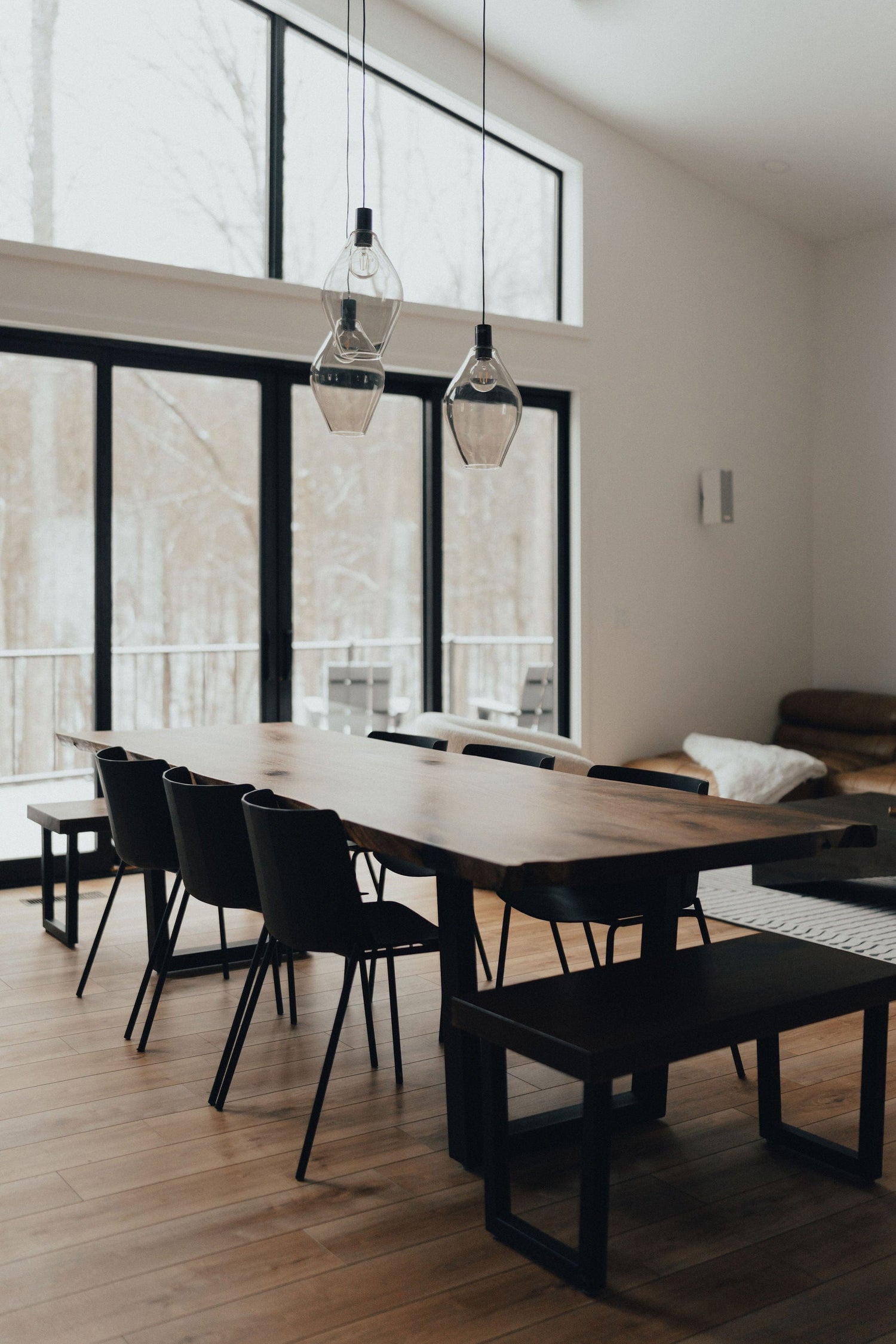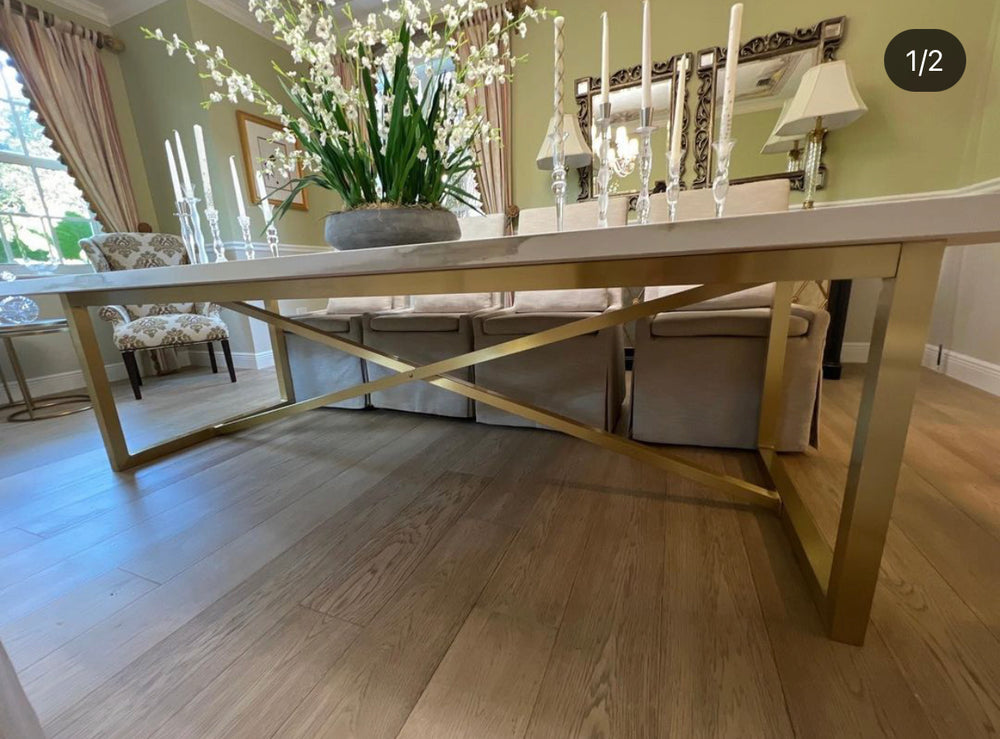How the Right Dining Room Table Legs Can Complete Your Dining Room Look
How the Right Dining Room Table Legs Can Complete Your Dining Room Look
Blog Article
From Typical to Modern: Discover the Suitable Dining Room Table Legs for Your Style
The choice of dining-room table legs plays an essential duty in specifying the total personality of your space, connecting the void in between standard craftsmanship and modern visual appeals. While classic designs such as cabriole and turned legs stimulate a feeling of classic class, contemporary styles like barrette and geometric options present a chance for striking visual rate of interest. Reviewing the ideal balance in between these styles needs a nuanced understanding of your existing design and individual preference. As you consider these elements, the concern remains: exactly how can you flawlessly incorporate these varied leg designs to develop a harmonious dining experience?
Comprehending Table Leg Styles
The range of eating space table leg styles can significantly affect both the aesthetic appeals and functionality of the room. Each leg design contributes special sensible functions and visual components, accommodating varied design preferences and use demands. Understanding these designs is essential for choosing the right table that lines up with your general interior layout vision.
For circumstances, tapered legs provide a clean, traditional appearance that can improve a room's elegance, while stand bases give stability and maximize legroom, making them perfect for smaller spaces. Hairpin legs, a trademark of mid-century contemporary layout, introduce an industrial panache, enabling a ventilated, open feel. Trestle legs evoke rustic appeal, supplying durable support and a sense of eternity.
Wooden legs can bring heat and structure, whereas steel options typically convey a sleek, contemporary vibe. Inevitably, recognizing table leg designs is vital for producing a natural eating area that shows personal style while making sure functionality and comfort.
Standard Table Leg Options
When selecting dining space table legs, conventional options typically personify timeless beauty and craftsmanship. These designs mirror an abundant heritage and a dedication to quality, making them suitable for those who appreciate timeless visual appeals.
One of the most famous typical leg designs is the cabriole leg, identified by its stylish bent form. This design commonly features decorative makings and is most commonly located in Queen Anne and Chippendale furniture. One more preferred option is the turned leg, which boasts a series of smooth, rounded shapes that supply a traditional appearance while keeping stability.
Furthermore, the straight leg, while simple, offers a basic and sturdy framework that can mix flawlessly with a variety of tabletop designs. For those attracted to ornate outlining, claw-and-ball feet legs evoke a sense of magnificence and can act as a stunning prime focus in any kind of eating room.
Lastly, stand bases, although not strictly legs, supply an alternate typical option that permits enough legroom and can be beautifully sculpted. Each of these traditional leg styles adds to the general atmosphere of a dining area, weding function with visual allure.

Modern Table Leg Layouts
Modern table leg styles use a diverse series of styles that stress clean lines and cutting-edge products. These designs typically focus on capability while functioning as striking prime focus within a dining room. Minimalist visual appeals are common, with legs crafted from products such as metal, glass, and engineered wood, which contribute to a modern and airy feeling.
One preferred style is the barrette leg, identified by its slim, tapered framework that gives stability without frustrating the tabletop (dining room table legs). This design is frequently discovered in mid-century modern-day furniture and can effortlessly match numerous table shapes. Another pattern is the usage of geometric shapes, where legs may take on angular or unbalanced kinds, adding aesthetic passion and a touch of virtuosity

Blending Designs for Special Areas
Usually, homeowners look for to produce one-of-a-kind eating areas that reflect their personal design by mixing various layout elements. This method enables the incorporation of varied visual appeals, leading to a harmonious yet distinct setting. Matching a rustic wooden table with smooth, modern steel legs can create an eye-catching comparison that elevates the space's overall appeal.
In addition, integrating vintage table legs with contemporary table tops can stimulate a feeling of history while keeping a modern sensibility. Such combinations not only showcase private taste however additionally urge creativity, enabling homeowners to curate a room that really feels both personal and inviting.
Shade plays an important role in this mixing procedure; choosing table legs that complement or contrast with the existing shade plan can boost aesthetic rate of interest. Whitewashed legs can soften the boldness of a dark table surface, producing a well balanced visual.
Tips for Choosing the Right Legs
Selecting the right table legs is necessary for accomplishing both performance and aesthetic charm in your eating space. Begin by taking into consideration the overall design of your space. link Standard setups take advantage of legs that include detailed makings or transformed designs, while modern rooms might require streamlined, minimalist styles.
Next, evaluate the elevation and stability of the legs. dining room table legs. Conventional dining tables vary in between 28 to 30 inches in height, so make certain the legs enhance this measurement for convenience. Additionally, robust products, such as wood or steel, can boost stability and long life
Assess the leg form also-- options include directly, tapered, or pedestal layouts. Straight legs provide a traditional appearance, while tapered legs can include a touch of sophistication. Pedestal bases give enough legroom and are suitable for smaller sized spaces.
Final Thought
In recap, selecting the excellent dining area table legs needs mindful consideration of both modern and traditional styles. By harmonizing leg style, elevation, and material with the overall Read Full Article décor, a cohesive and inviting ambience can be attained.
The variety of dining area table leg designs can considerably affect both the aesthetic appeals and performance of the room. Inevitably, comprehending table leg designs is important for producing a cohesive dining location that shows personal design while guaranteeing usefulness and comfort.One of the most legendary traditional leg styles is the cabriole leg, identified by its stylish bent shape. Straight legs supply a classic look, while tapered legs can add a touch of sophistication.In summary, selecting the optimal eating area table legs needs cautious factor to imp source consider of both traditional and contemporary styles.
Report this page